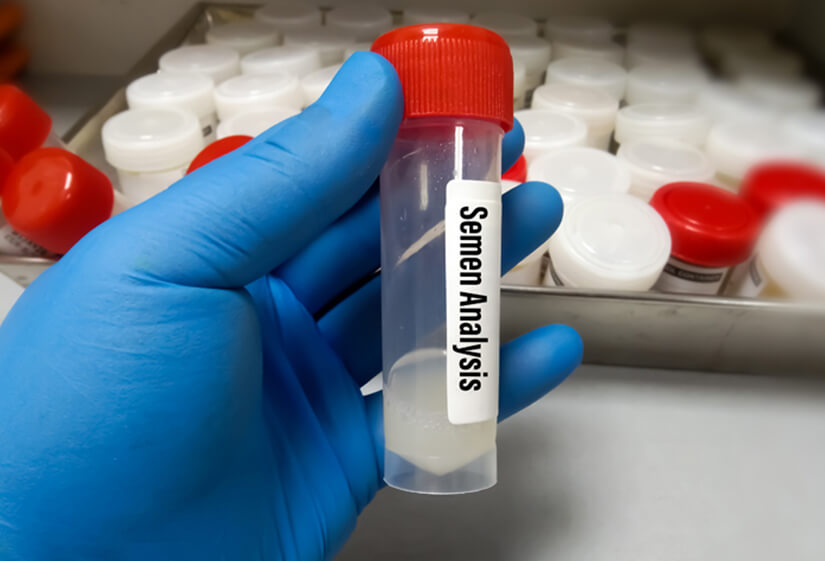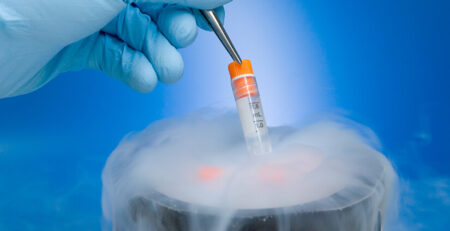Selection of the Best Sperm in an IVF Laboratory
When it comes to the success of IVF treatment in Delhi, every detail counts, especially the selection of the healthiest and most viable sperm. Many couples wonder how sperm is selected in an IVF laboratory and how it contributes to a higher IVF success rate.
Let’s get into the world of sperm selection techniques and understand their pivotal role in fertility treatments.
Why is Sperm Selection Important?
The journey to parenthood through IVF begins with the selection of the best sperm. Sperm quality directly impacts embryo development, implantation, and, ultimately, the outcome of the IVF cycle. Defective or weak sperm can lead to failed fertilization or poor embryo quality, which is why advanced sperm selection techniques are employed in IVF laboratories to maximize success.
Sperm are not all created equal. Within a single semen sample, there can be significant variability in motility, morphology, and DNA integrity. Without proper selection, these discrepancies could lower the chances of successful fertilization or result in genetic issues that affect the health of the embryo. Hence, identifying the most viable sperm is one of the first and most important steps in an IVF cycle.
Moreover, sperm selection becomes even more critical for couples facing male-factor infertility. Conditions such as low sperm count, poor motility, or high levels of DNA fragmentation necessitate specialized techniques to ensure only the best sperm are used. This meticulous process can make all the difference in achieving a successful pregnancy.
Common Sperm Selection Techniques
In an IVF Centre in Delhi, and globally, several sophisticated techniques are used to identify the best sperm:
1- Swim-Up Technique: This method relies on the natural swimming ability of sperm. After the semen sample is processed, the most motile sperm swim to the top of the medium and are carefully selected for fertilization. It ensures that only the strongest sperm are chosen.
The swim-up technique is simple yet effective. By mimicking the natural movement of sperm toward the egg, it isolates those that are both highly motile and structurally sound. This method is particularly useful for cases where the semen analysis shows normal parameters but fertilization rates need improvement.
2- Density Gradient Centrifugation: This widely-used technique separates sperm based on their density. A gradient medium is used, and centrifugation forces healthier sperm to settle at the bottom. These are then collected for fertilization.
This technique is highly effective in removing debris, dead sperm, and immotile sperm from the sample. It is commonly employed in cases of oligospermia (low sperm count) or when there are high levels of abnormal sperm in the sample.
3- Intracytoplasmic Morphologically Selected Sperm Injection (IMSI): Using high-magnification microscopes, embryologists identify sperm with the best morphology (shape and structure). This ensures that only genetically superior sperm are injected into the egg.
IMSI takes sperm selection a step further by examining sperm at 6000x magnification. This allows embryologists to detect subtle defects in the sperm’s head, midpiece, or tail that may not be visible under standard magnification. By choosing morphologically perfect sperm, IMSI significantly reduces the risk of chromosomal abnormalities in the resulting embryos.
4- Magnetic-Activated Cell Sorting (MACS): MACS is a revolutionary technique that removes apoptotic (damaged) sperm from the sample, leaving behind healthier ones. This advanced method is particularly beneficial for cases with high levels of DNA fragmentation.
Apoptotic sperm, which are on the verge of dying, often have compromised DNA integrity. MACS uses magnetic beads coated with antibodies that bind to apoptotic markers, allowing these defective sperm to be separated from the healthy population. This technique is a game-changer for couples with repeated IVF failures or recurrent pregnancy loss.
5- Zeta Potential Method: This innovative technique involves selecting sperm based on their electrical charge. Healthier sperm have a higher negative charge, allowing embryologists to identify and use the best options for fertilization.
The Zeta potential method is gaining traction due to its ability to isolate sperm with intact membranes and high DNA integrity. It is especially useful in cases of unexplained infertility where traditional methods have not yielded desired results.
6- PICSI (Physiological Intracytoplasmic Sperm Injection) : Unlike conventional ICSI, where sperm are selected based on morphology and motility, PICSI mimics natural sperm selection by using a hyaluronan-coated dish. Hyaluronan is naturally present on egg’s outer layer. Only mature, functionally competent sperm (with intact DNA and better fertilization potential) can bind to hyaluronan. This helps embryologists to select the best sperm for ICSI. It benefits in case of
- Repeated IVF failure or miscarriages
- High DNA fragmentation in semen sample

Getting pregnant is now easier
Book IVF Consultation
Emerging Techniques in Sperm Selection
While the above techniques are widely used, researchers are continually developing new methods to improve the accuracy and efficiency of sperm selection. Some of these emerging techniques include:
- Microfluidic Devices: These devices mimic the natural environment of the female reproductive tract, allowing only the most motile and structurally sound sperm to pass through. They offer a non-invasive and highly selective approach to sperm selection.
- Raman Spectroscopy: This cutting-edge technique analyzes the molecular composition of sperm, helping embryologists identify those with the best genetic potential.
- Artificial Intelligence (AI): AI-powered tools are being developed to assist embryologists in identifying the healthiest sperm based on a wide range of parameters, including motility, morphology, and DNA integrity.
How Sperm Selection Impacts IVF Success Rates?
The relationship between sperm quality and the IVF success rate is undeniable. High-quality sperm not only fertilize the egg effectively but also contribute to better embryo development. Studies show that using advanced sperm selection techniques can significantly improve pregnancy outcomes by ensuring:
- Reduced risk of genetic abnormalities
- Higher fertilization rates
- Better-quality embryos
- Increased chances of successful implantation
Embryo quality is a critical determinant of IVF success. Even if the egg is of excellent quality, the presence of defective sperm can hinder embryo development. By employing state-of-the-art sperm selection methods, IVF laboratories can maximize the chances of creating high-grade embryos, thereby enhancing the likelihood of a positive pregnancy test.
Challenges in Sperm Selection
Despite the advancements in sperm selection techniques, challenges remain. Factors such as severe male infertility, high levels of DNA fragmentation, or azoospermia (absence of sperm) require personalized approaches. In such cases, techniques like testicular sperm extraction (TESE) may be employed to retrieve viable sperm directly from the testes.
Another challenge is the variability in semen quality across different samples. Factors such as lifestyle, age, and underlying medical conditions can significantly impact sperm quality. IVF specialists often recommend lifestyle modifications, such as maintaining a healthy diet, avoiding smoking and alcohol, and managing stress, to improve sperm health before undergoing treatment.
The Role of IVF Centres in Optimizing Sperm Selection
Modern IVF Centres in Delhi leverage state-of-the-art technology and expertise to ensure the best outcomes for their patients. A skilled team of embryologists plays a crucial role in the sperm selection process, carefully analyzing and choosing the healthiest sperm for fertilization. These efforts are supported by advanced laboratory equipment and strict protocols that ensure optimal results.
Furthermore, personalized treatment plans are essential. Each couple’s fertility journey is unique, and the choice of sperm selection technique must be tailored to their specific needs. Experienced IVF specialists collaborate closely with embryologists to develop strategies that maximize the chances of success.
FAQs About Sperm Selection Techniques
Sperm selection enhances the chances of IVF success by choosing the healthiest sperm, but success depends on multiple factors like egg quality, embryo development, and uterine health. While it improves outcomes, it cannot entirely guarantee pregnancy.
Advanced sperm selection techniques are entirely non-invasive for patients. They are laboratory procedures performed on collected sperm samples, ensuring no physical discomfort or pain for the individual undergoing treatment.
Techniques like Microfluidics, PICSI MACS and IMSI effectively identify and isolate sperm with minimal DNA fragmentation. By selecting the healthiest sperm, these methods improve fertilization rates, embryo quality, and overall IVF success outcomes.
In cases of azoospermia, where no sperm is present in the ejaculate, surgical retrieval techniques like TESE or PESA can directly extract sperm from the testes or epididymis, enabling IVF.
The cost of sperm selection depends on the chosen technique and the clinic’s pricing. Advanced methods like IMSI, PICSI, Microfluidics or MACS may increase costs but offer higher precision, often justifying the investment for improved outcomes.
Take the Next Step with Dr. Rhythm Gupta
When it comes to choosing the right fertility expert, experience and expertise matter. Dr. Rhythm Gupta, a renowned IVF specialist in Delhi, offers cutting-edge treatments tailored to your unique needs. With a commitment to utilizing the most advanced sperm selection techniques and a high IVF success rate, she has helped countless couples realize their dream of parenthood.
Contact Dr. Rhythm Gupta’s clinic today to schedule a consultation and take the first step toward your parenthood journey.

Dr. Rhythm Gupta
Consultant Obstetrician,
Gynaecologist & Infertility Specialist,
MBBS, M.S Obstetrics & Gynaecology
At Excel IVF, we don’t just treat tests and parameters. We partner with you through the emotional, scientific, and medical journey of fertility. Here, Dr. Rhythm Gupta, the leading IVF specialist in Delhi, shares insights from her years in reproductive medicine, breaking down myths, best practices, and what matters most in your path to becoming a parent.
Book a consultation today to understand better and begin your parenthood journey. Call: +91-8920963596 or Email Us: excelivf@gmail.com












